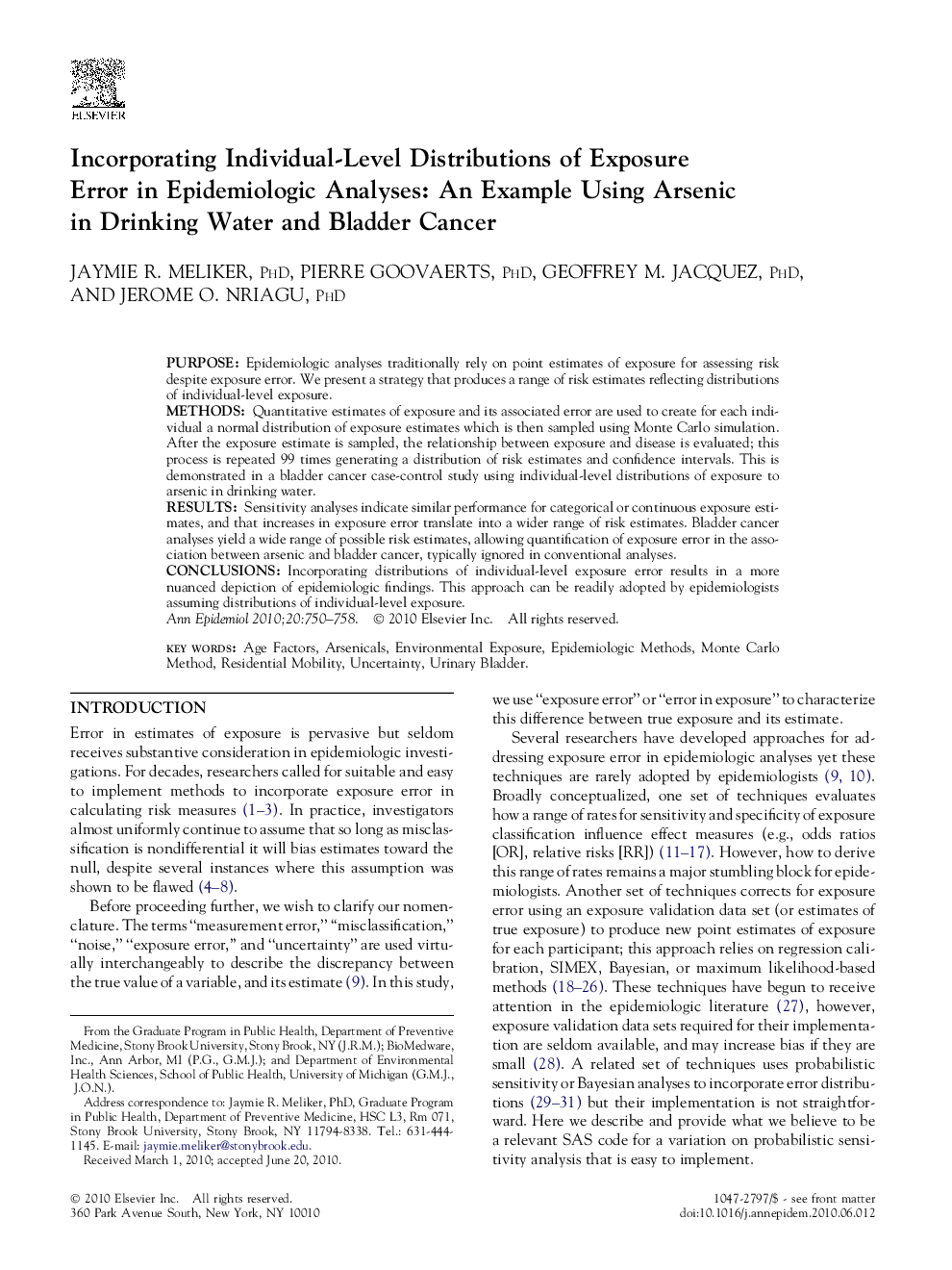| Article ID | Journal | Published Year | Pages | File Type |
|---|---|---|---|---|
| 3444639 | Annals of Epidemiology | 2010 | 9 Pages |
PurposeEpidemiologic analyses traditionally rely on point estimates of exposure for assessing risk despite exposure error. We present a strategy that produces a range of risk estimates reflecting distributions of individual-level exposure.MethodsQuantitative estimates of exposure and its associated error are used to create for each individual a normal distribution of exposure estimates which is then sampled using Monte Carlo simulation. After the exposure estimate is sampled, the relationship between exposure and disease is evaluated; this process is repeated 99 times generating a distribution of risk estimates and confidence intervals. This is demonstrated in a bladder cancer case-control study using individual-level distributions of exposure to arsenic in drinking water.ResultsSensitivity analyses indicate similar performance for categorical or continuous exposure estimates, and that increases in exposure error translate into a wider range of risk estimates. Bladder cancer analyses yield a wide range of possible risk estimates, allowing quantification of exposure error in the association between arsenic and bladder cancer, typically ignored in conventional analyses.ConclusionsIncorporating distributions of individual-level exposure error results in a more nuanced depiction of epidemiologic findings. This approach can be readily adopted by epidemiologists assuming distributions of individual-level exposure.
